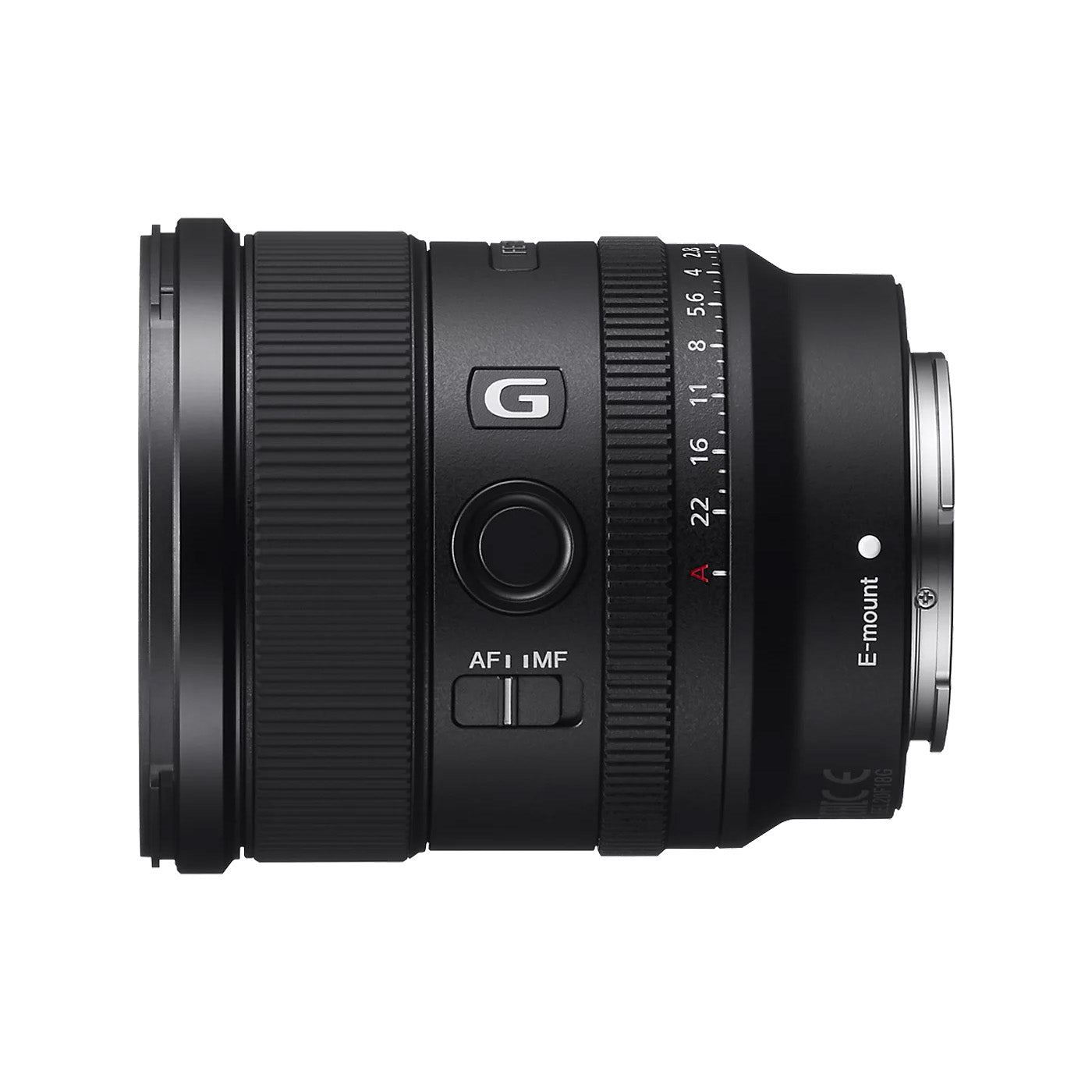Product Description
Sony FE 20mm f1.8 G Ultra Wide-Angle Lens: Compact Excellence
Capture stunning wide-angle shots with the Sony FE 20mm f1.8 G Ultra Wide-Angle Lens. Designed for full-frame E-mount cameras, this lens offers superior optical performance with a bright f/1.8 aperture, making it perfect for low-light conditions and creating beautiful bokeh. Its advanced optical design reduces aberrations and enhances clarity and colour accuracy, while the Nano AR Coating minimizes reflections and flare. With a compact, lightweight design and robust construction, this lens is ideal for vlogging, travel, and everyday photography. Experience the precision and reliability of the G Lens series with the Sony FE 20mm f1.8 G Ultra Wide-Angle Lens.

Key Features
- E-Mount Lens/Full-Frame Format: Ideal for Sony E-mount full-frame cameras, also suitable for APS-C models.
- Aperture Range: f/1.8 to f/22: Wide aperture range for diverse shooting conditions.
- Two Aspherical Elements: Reduced distortion and spherical aberrations.
- Three Extra-Low Dispersion Elements: Minimized chromatic aberrations and colour fringing.
- Nano AR Coating and Fluorine Coating: Enhanced contrast, colour fidelity, and durability.
- Dual XD Linear Motor AF System: Fast, quiet, and precise autofocus.
- Linear Manual Focus Response: Natural handling and control.
- Focus Hold Button, Focus Mode Switch: Easy access to focus settings.
- Dust and Moisture Resistant: Reliable performance in challenging environments.
- Rounded 9-Blade Diaphragm: Smooth, pleasing bokeh.

G Lens Series: Superior Optical Performance
The Sony FE 20mm f1.8 G Ultra Wide-Angle Lens belongs to Sony's G Lens series, renowned for its exceptional optical performance and innovative design. This lens offers an ultra-wide perspective with outstanding image quality, making it ideal for landscapes, architecture, and astrophotography.
- Two Advanced Aspherical (AA) Elements: Greatly reduce distortion and spherical aberrations, ensuring high sharpness and accurate rendering.
- Three Extra-Low Dispersion (ED) Elements: Minimize colour fringing and chromatic aberrations, enhancing clarity and colour accuracy.
- Nano AR Coating: Reduces surface reflections, flare, and ghosting, improving contrast and colour fidelity, especially in strong lighting conditions.
- Bright f/1.8 Aperture: Excellent for low-light conditions and maintaining a compact form factor.
- Rounded 9-Blade Diaphragm: Produces pleasing bokeh for artistic selective focus techniques.

Autofocus and Handling
- Dual XD Linear Motor System: Ensures quick, quiet, and precise autofocus, perfect for both stills and video.
- Linear Response Manual Focus: Provides natural handling with a tactile AF/MF switch on the lens barrel.
- Customizable Focus Hold Buttons: Offer intuitive control and quick access to selected settings.
- Physical Aperture Ring: Can be de-clicked for smooth, silent aperture transitions, benefiting video applications.
- 67mm Front Thread: Allows for easy use of filters, enhancing creative control.

Compact, Portable Design
- Lightweight and Portable: Weighing just 12.3 oz, this lens is ideal for vlogging, walk-around shooting, and use with APS-C-format cameras, gimbals, or accessory grips.
- Dust and Moisture Resistant: Ensures reliable performance in challenging environments.
- Fluorine-Coated Front Element: Resists dust, moisture, and fingerprints, making it easy to clean and maintain.

Payment & Security
Your payment information is processed securely. We do not store credit card details nor have access to your credit card information.



















